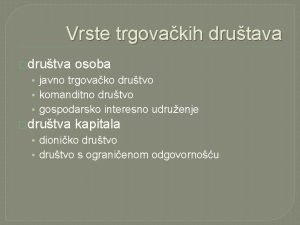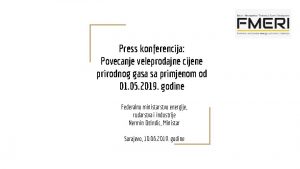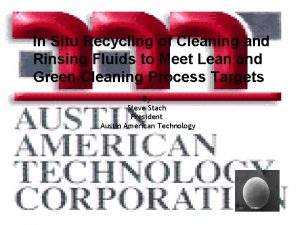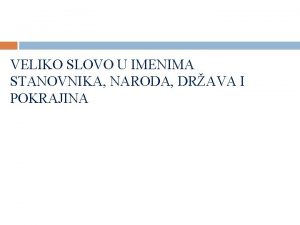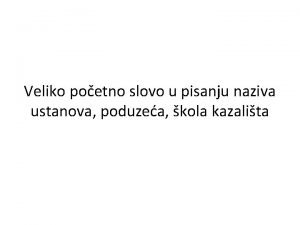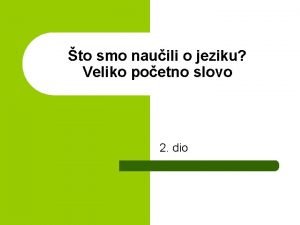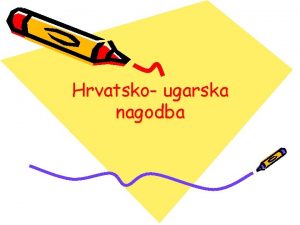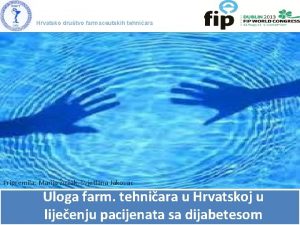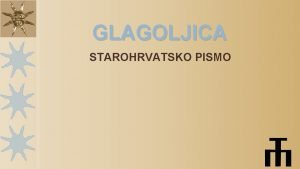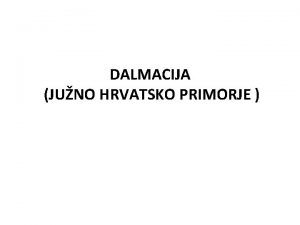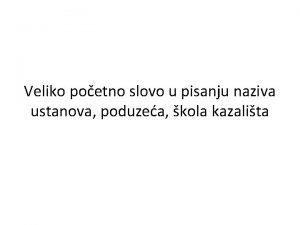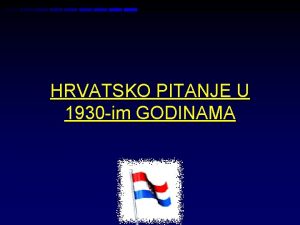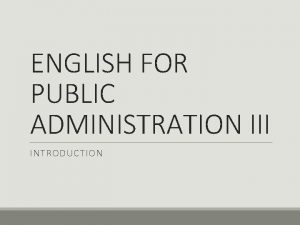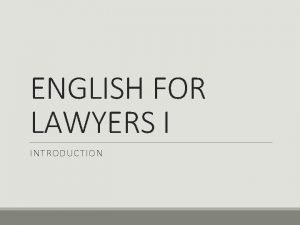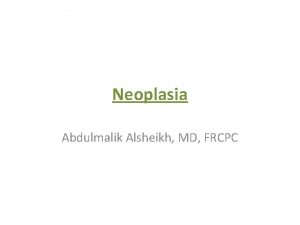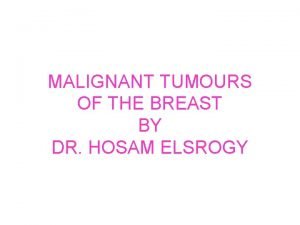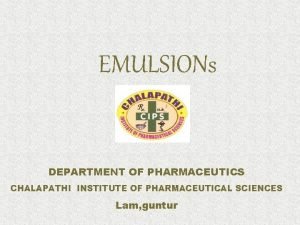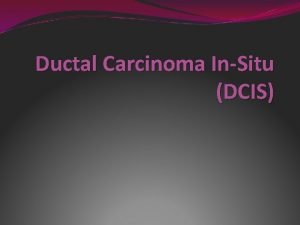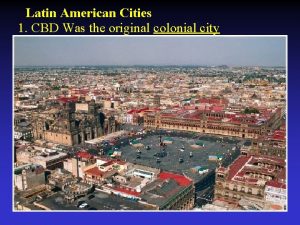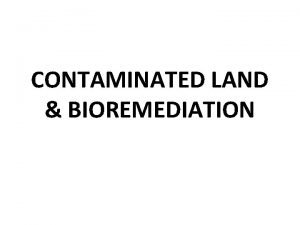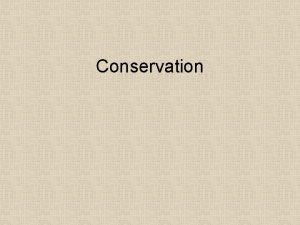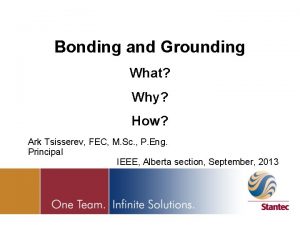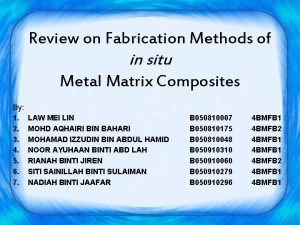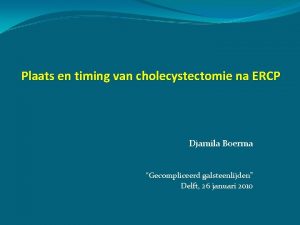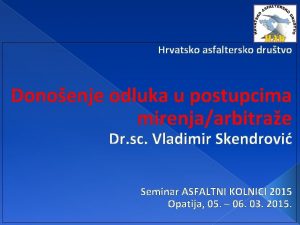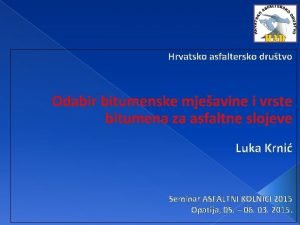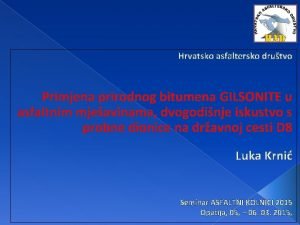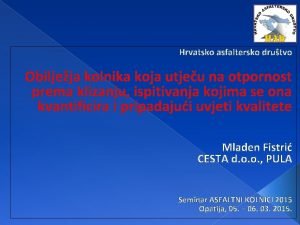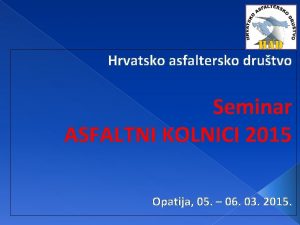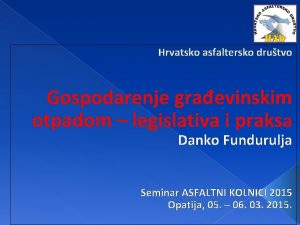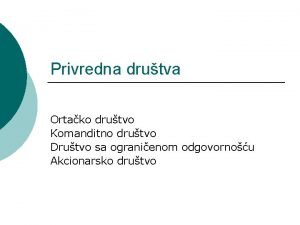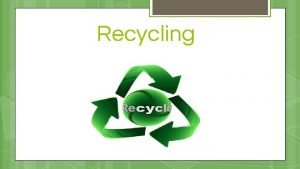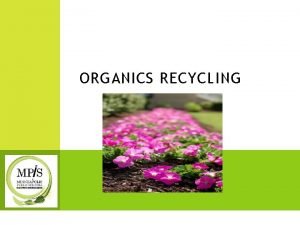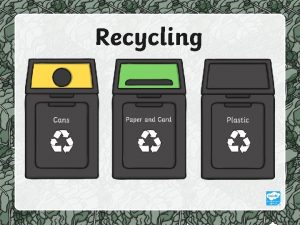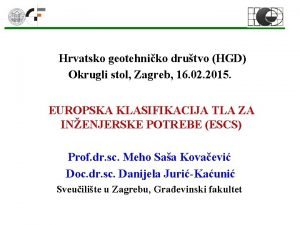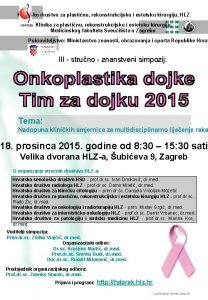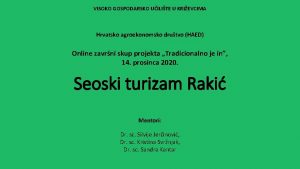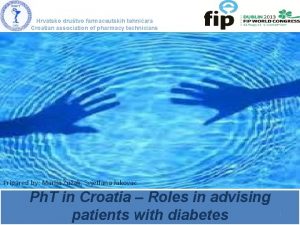HRVATSKO ASFALTERSKO DRUTVO COLD IN SITU RECYCLING AND








































- Slides: 40

HRVATSKO ASFALTERSKO DRUŠTVO COLD IN SITU RECYCLING AND VERY THIN ASPHALT CONCRETE - FRENCH TECHNOLOGY JP MICHAUT SEMINAR ASFALTNI KOLNICI 2015 OPATIJA, 05. – 06. 03. 2015

Novacol cold in situ recycling • NOVACOL from 1986 • More than 25 years • More than 6, 000 m² • In different countries 2

What is the cold in-situ recycling? Cold in-situ recycling consists: - milling or crushing the old pavement up to 20 cm depth, - incorporate in the same time in the milled and crushed material a bituminous emulsion, - In order to stabilize the recycled layer and to give it rejuvenation and cohesion. The mixture is laid and compacted to constitute a new binder course 3

Cold in-situ recycling workshop ROLLER MIXER MILLING MACHINE E COMPACTOR SUPPLY TANKER (Rejuvenating emulsion) PAVER WINDROW ELEVATORTACK COAT Length around 200 m only !!! 4

Novacol Cold in-situ recycling PRINCIPLE 5

Cold in-situ recycling Objectives and fields • To recycle the upper bituminous layers damaged by fatigue to form a new binder or base course. • To recycle the surface layer and a few centimeters of the course of semi rigid pavement in order to restore the bonding and to reconstitute a new surfacing. • To recycle alone the bituminous wearing course to remedy surface layer problem such as cracking, excessive ageing of binder, etc. 6

Cold in-situ recycling Limits of use • • • Climatic condition too low Max size < 80 mm Presence of geo textile Presence of many services exits and manholes Homogeneity of the old pavement 7

State of the art: French guide 8

Objectives and Classification Type Class Emulsion 1 2 Cement 3 4 Goal Structural Wearing course Reinforcement rehabilitation Existing pavement Few cm of AC + unbound or bound base course 4 to 8 cm of AC + unbound or bound base course 100% of AC AC + binder and base course Binder course Base course Use Wearing course Structural rehabilitation reinforcement 9

Objectives and Classification Type Emulsion Cement Class 1 2 Goal Structural Reinforcement Wearing course rehabilitation Use Base course Binder course Base course Emulsion Rejuvenating emulsion Cement or similar Up to 2 % residual binder 3 to 7 % hydraulic binder 5 to 12 cm 20 to 30 cm Binder content Thickness 3 to 5 % 1 to 3 % residual binder 10 to 15 cm 5 to 12 cm 3 4 Wearing course Structural rehabilitation reinforcement 10

Cold in-situ recycling Mechanical performances Results of Duriez test Modulus at 15° C (MPa) Unbound graded aggregate stabilized with emulsion (class 1): • R at 14 days between 1. 5 and 2. 2 MPa and r/R > 0. 55 • R at 14 days between 2. 2 and 3. 3 MPa and r/R > 0. 55 1500 2500 Recycled material with emulsion including 75 to 90% of reclaimed bituminous material (class 2): • R at 14 days lower than 4 MPa and r/R > 0. 65 • R at 14 days higher than 4 MPa and r/R > 0. 65 2000 3000 Recycled material with emulsion with more than 90% of reclaimed bituminous material (class 3): • R at 14 days higher than 4 MPa and r/R >0. 70 • Other cases 4000 3000 Correlation used in France between Duriez test results and estimated stiffness modulus 11

Novacol Cold in-situ recycling Preliminary studies • Field investigation (boring, deflection, visual aspect) • Characterization of the in situ materials • Feasibility of in situ recycling Ø Maximum size material Ø Old binder characteristics (Pen-R&B) 12

Novacol Cold in-situ recycling Mix design • Characterization of the material • Selection of the new binder to determine the need of rejuvenation • Binder determination according to the in situ total Asphalt concrete Ø Class I : 3 to 5 % Ø Class II : 1 to 3 % Ø Class III : Up to 2% • Mechanical properties: water resistance (Duriez) & Gyratory Shear Press tests (PCG) 13

Novacol Cold in-situ recycling REJUVENATION AGEING BINDER Target : R&B decrease from 5 to 15° C TEST BEFORE AFTER Pen at 25 °C (0, 1 mm) 5 - 11 15 - 22 R&B (°C) 80 - 92 62 - 84 14

Wearing course In situ treatment • In situ recycling as binder course • Sealing coat after compaction • Wearing course is adapted to the traffic: Ø Ø Surface dressing Micro surfacing, Thin AC Thick AC for Heavy traffic 15

In situ recycling as wearing course • Depth from 5 to 7 cm thick • Calibrated reclaimed asphalt (milling procedure and old wearing course quality) • Special emulsion for a good coating and for rejuvenating the old binder Before After Gain Pen 12 41 29 R&B 70 56 14 Fraass -2 -11 9 16

In situ recycling as wearing course Mechanical characteristic evolution 1 month 1 year 3 years Pen in 1/10 mm 32 33 32 R&B in °C 61 57 60 Fraass point in °C -11 -9 -8 Density in % 87 88 87 Stiffness in MPa 900 3200 3000 Texture depth in mm > 0. 6 > 0. 5 > 0. 4 17

Novacol Cold in-situ recycling Perfect bonding BEFORE AFTER 18

Before During After

Novacol Cold in situ recycling AC with asbestos 6 cm AC 20 cm Cement material 5 cm AC Very good bonding 13 cm NOVACOL 18 cm Cement material Limoges airport 20

Novacol typical job site in France • Structure in place: Ø 5 cm surface course Ø 6 cm Binder Course (AC) • The job : Ø In situ recycling: 8 cm depth Ø Rejuvenating emulsion: 2% Ø Wearing course : thin asphalt concrete (Ruflex) 4 cm 21

Works under traffic 22

In situ multi recycling • Traffic: 150 < HGV < 300 • Pavement reinforced in 2001 with: Ø 4 cm thin AC Ø 8 cm of in situ cold recycling with emulsion • Asphalt concrete • Unbound materials 23 23

2010 maintenance 1 st section • in situ treatment: 8 cm thick • micro surfacing 2 nd section • milling of the existing wearing course • In situ treatment: 8 cm thick • 4 cm thin AC 24

Binder characteristics • 1 st section: 100% of reclaimed asphalt with 2% special emulsion Pen R&B Fraass before 7 75 7 after 35 60 -12 Pen R&B Fraass before 17 64 -4 after 38 53 -11 • 2 nd section: as above 25

Special emulsion Traditional emulsion Special emulsion Before After Gain Pen 23 26 3 R&B 62 58 4 Fraass -7 -11 4 Pen 12 41 29 R&B 70 56 14 Fraass 1 -11 12 26

Follow-up • All cores are stuck • Density: § Traditional emulsion : 82 -85% § Special emulsion : 88 -92% 27

Very high rutting resistance Transversal profile RN 10 slow lane : 20, 000 vehicles / day, 16 % of HGV after 10 years : no transversal deformation 28

Life cycle analysis: energy consumption for 1 m² recycled road 29

Life cycle analysis : GHG Emission for 1 m² recycled pavement 30

31

Very thin asphalt concrete BBTM • • European standard 13108 -2 Thickness from 20 to 30 mm Aggregates: LA 20 -MDE 15 -PSV 50 Grading 0/6 and 0/10 Modified bitumen Water resistance 2 classes Ø Class 1: void content 12/19% Ø Class 2: void content 20/25% • Mechanical stability (rutting test) 32

French formulations 33

BBTM uses • Main use Ø High level of skid resistance Ø Low rolling noise • Macro texture (Mean texture depth) Ø BBTM 0/6: 0. 7 mm for 90% Ø BBTM 0/10: 0. 9 mm for 90% 34

Longitudinal braking force coefficient 0, 70 0, 60 9 th decile 0, 50 BBTM 0, 40 0, 30 0, 20 0, 10 0, 00 40 1 st decile 60 80 100 Speed in km/h 120 35

BBTM uses • Existing pavement Ø Take care about the support Ø Tack coat to water proof the existing pavement • New pavement Ø Binder course Ø Take coat 36

Novacol Cold in-situ recycling Advantages • • • To save new material by the re-use of whole in place To reduce the energy consumption To reduce the need for transport To limit the ancillary works (adjustment of levels, raising kerbs) Very economic about 30% less traditional techniques Environmental less G. E. S. To reopen the roadway to traffic immediately To recycle only one lane if necessary Etc… 37

Conclusions Cold in situ recycling • More than 25 years of knowledge • In situ recycling for the 2 nd time • Good performances • Mechanical performance improvement • Environmental friendly technique • According to the treatment: No need of wearing course 38

Conclusions Very thin asphalt concrete • New wearing course • Good surface characteristics (noise, skid resistance, macro texture) • Check the existing wearing course before (cracks, transversal profiles, etc. ) • Take coat !!! 39

Thank you for your attention 40
 Hrvatsko asfaltersko društvo
Hrvatsko asfaltersko društvo Hrvatsko asfaltersko društvo
Hrvatsko asfaltersko društvo Bh gas
Bh gas Tomislav šafran
Tomislav šafran In situ recycling
In situ recycling Imena naroda se pisu
Imena naroda se pisu Hrvatsko narodno kazalište pravopis
Hrvatsko narodno kazalište pravopis Posvojni pridjevi od imena gradova
Posvojni pridjevi od imena gradova Parovi 9 katarina
Parovi 9 katarina Hrvatsko društvo farmaceutskih tehničara
Hrvatsko društvo farmaceutskih tehničara Kako globalizacija utjece na hrvatsko gospodarstvo
Kako globalizacija utjece na hrvatsko gospodarstvo Hrvatska glagoljica abeceda
Hrvatska glagoljica abeceda Južno hrvatsko primorje
Južno hrvatsko primorje Hrvatsko narodno kazalište pravopis
Hrvatsko narodno kazalište pravopis Hrvatsko pitanje 1939
Hrvatsko pitanje 1939 Upravni govor tri nacina
Upravni govor tri nacina Glosbe hrvatsko engleski
Glosbe hrvatsko engleski Glosbe hrvatsko engleski
Glosbe hrvatsko engleski Welcome 1 unit 10 lesson 1
Welcome 1 unit 10 lesson 1 Prosedur pengurusan situ
Prosedur pengurusan situ Carcinoma in situ
Carcinoma in situ Malignant neoplasm
Malignant neoplasm Griffin ford latin american model
Griffin ford latin american model Breast lump differential
Breast lump differential Emulsifying agents examples in pharmacy
Emulsifying agents examples in pharmacy Auxiliary emulsifying agent
Auxiliary emulsifying agent Oligeneous
Oligeneous Carcinoma in situ
Carcinoma in situ Hybridation in situ protocole
Hybridation in situ protocole Lobular breast
Lobular breast In situ data collection
In situ data collection Zone of in situ accretion
Zone of in situ accretion English method emulsion
English method emulsion Ex situ meaning
Ex situ meaning Ex situ conservation definition
Ex situ conservation definition Ex situ conservation definition
Ex situ conservation definition Biodiversity and conservation
Biodiversity and conservation Locucion latina a priori
Locucion latina a priori In-situ grounding electrode
In-situ grounding electrode In situ fabrication
In situ fabrication Recidief pancreatitis
Recidief pancreatitis

